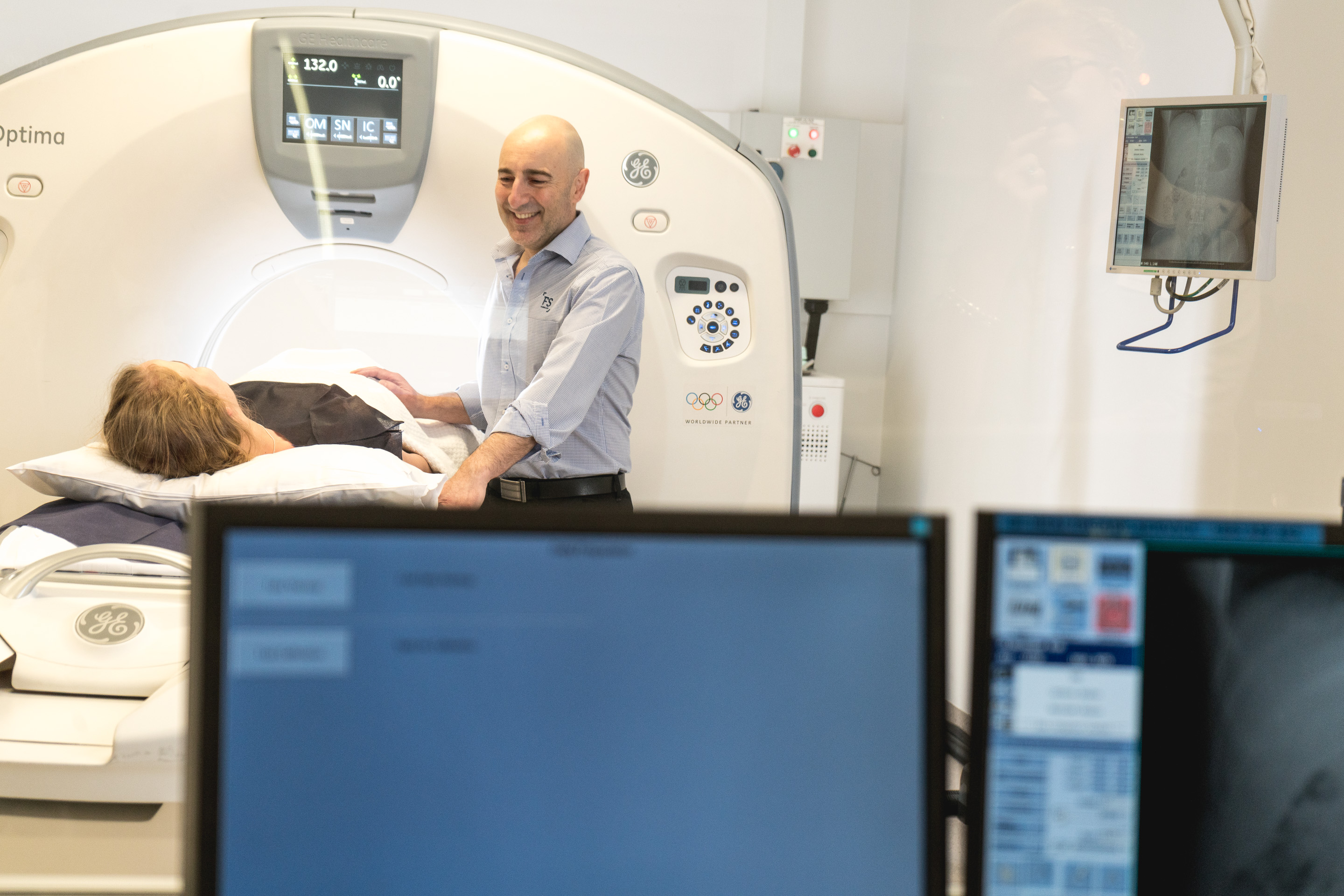
Medial Branch Block
What is a Medial Branch Block?
A medial branch block is an injection of either local anaesthetic alone or a combination of cortico-steroid and local anaesthetic that is placed around the nerves that supply the small joints of the spine. These joints are called facet joints and they give stability to the spine and help control motion.
Why do I need a Medial Branch Block?
A medial branch block is used to determine if removing the feeling from the facet joint causes pain to be temporarily eliminated. The procedure is often used for diagnostic purposes. If significant relief is achieved then you may be suitable to have a more permanent disruption to the nerve supply of the facet joint by RFD (radio frequency denervation).
Procedure
A Radiologist will perform the procedure under CT guidance. The patient will be asked to lie face down on the bed of the CT scanner and the area to be injected will be cleaned using the antiseptic solution. A small needle will then be placed near where the nerve lies and CT images will be used to check the needle position. Contrast (X-ray dye) may also be used to confirm correct positioning of the needle. Either local anaesthetic alone, or a combination of cortico-steroid and local anaesthetic is then injected.
You may experience some discomfort for a short time until the local anaesthetic has time to work. The procedure usually takes about 15-30 minutes.
Are there any risks or side effects?
There are always risks and/or side effects associated with any treatment/procedure. Overall however, the risks are low but can include:
- discomfort at the injection site
- mild increase in pain following the injection (probably due to the pressure effect of the injection)
- very rare nerve damage (due to trauma, the medication, infection or bleeding)
- allergic reaction to the medication
Post Procedure
- You must have someone with you who can take you home.
- If pain relief occurs, it will be short lived, approximately 4 to 6 hours. During this time it is very important for you to record how much pain relief you had.
- If you are given a pain relief chart to fill out please take the time to fill it out and remember to take the completed chart with you when you next see your treating Doctor.
- You may notice some slight bruising and/or soreness at the site of the needle. If required, apply ice to the affected area and take paracetamol (e.g. Panadol) to help with relief of these symptoms.
- There may be an increase in pain and some stiffness at first, however this generally wears off after 48 hours.
- You should refrain from exercise or strenuous activity for up to one week after the procedure depending on what your Doctor has told you. Please follow your treating practitioner’s advice on how best to recommence pre-treatment activities.
- If after 48 hours following your injection you are experiencing any fever, swelling, localised heat or increasing pain, you should contact your Doctor without delay.
Things we need to know from you
Please inform the Radiology staff of any of the following:
- If you have allergies to any medication, anaesthetic agent or X-ray contrast.
- If you are feeling unwell or need to cancel your appointment please ring our office as soon as possible on (08) 8229 210
Note to female patients: If you are pregnant, or suspect you may be, or if you are breast feeding please advise us before your appointment.
Important things you must bring to your appointment
- A referral from your Doctor
- Medicare card
- Pension/Concession card
- Any previous films/x-rays
- WorkCover/Motor Vehicle Accident claim details (if applicable) i.e. claim number, name of employer or insurer.
Concerns
Please feel free to contact our staff at any time if you have any questions or concerns on (08) 8229 2100


Fees and billing
We charge a competitive co-payment for services, fees will vary between different types of examinations.
